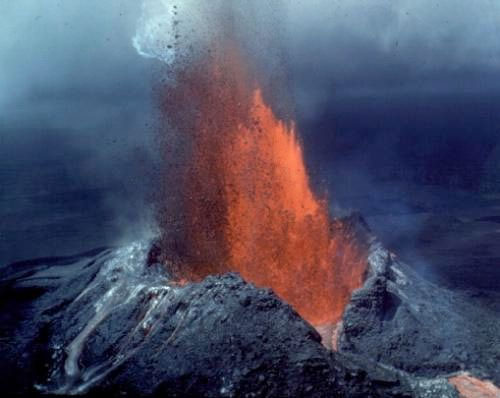Splitting Rocks
“And in that day His feet will stand on the Mount of Olives, which faces Jerusalem on the east. And the Mount of Olives shall be split in two, from east to west, making a very large valley; Half of the mountain shall move toward the north and half of it toward the south.” Zechariah 14:4
Surprising as His ways are, the Lord always follows procedure. Like Ahasuerus in the book of Esther, anything that is done is done by decree. Although, in the case of Ahasuerus, he needed to consult his elders, whereas God only consults his maturing elders (like Abraham and David–and now the church) to bring us to greater maturity.
A decree is written in the Most Holy, the king’s garden court (head). The elders in the Holy Place respond with liturgy (body). And then they ride out into the world on the swiftest horses to incite a Holy War that divides the world to bring about a New Creation.
In the case of Christ, He is the Word from the throne made flesh. As the Word-Man, He spoke and an earthly priesthood gathered around Him, then rode out into the world and turned it upside down. Then Jesus returned to assess the infant New World and divide the sheep from the goats throughout the empire.
Whatever the Lord does as Word is carried out in His body. Jesus was the rock “divided” to allow living waters to flow into the Land of Israel, which was barren through her harlotry with Greek philosophy and Roman political power. As the husband in Numbers 5 brought his wife to the priest for inspection, Jesus not only sent the cup of testing, He was the cup, the bitter-sweet sword-water. A faithful remnant was made fruitful, a harvest of many children, and the rest were blinded–in fact, cursed with spiritual miscarriage forever.
What we miss is that this same scenario structures the book of Zechariah, and it helps explain one of the most debated texts in the Bible. I have already commented on it here, but have another point to add.
In Zechariah’s visions, a New Covenant (reviving the one made with David and Solomon) is measured out liturgically in the Garden court of the King. The High Priest is given clean robes by the Angel of the Lord, the preincarnate Christ. This results in a new priest-king crowned in the Land (as the High Priest becomes the caretaker of David’s crown until the Messiah comes). As with the consecration of Aaron, this imputed ‘clean’ came from the future death of Christ (as did the reckoning of Abraham’s faith as righteousness, etc). So there is a subtle reference to Christ as the rock broken in the wilderness to make revived Judah fruitful again. Remember, at the time of Haggai and Zechariah, Israel was again in the Land but still alienated from it.
Before the kingly vision, the prophet sees horses and chariots riding out into the New (Restoration) Covenant world between two bronze mountains. The old Ark-Israel has been split in two so the new Lampstand-Israel can govern the world as mediator. Solomon’s two bronze pillars have become Mount Ebal and Mount Gerizim, split to allow the living water in the Temple chariots to flow into the empire, which had become the new Promised Land, a bigger territory to conquer.
Chapters 12-14 of Zechariah follow the same pattern. Only here, in chapter 14, it is the fiery bronze legs of Christ, greater Solomon, that split the rock, and the rock is the poor old, worn out, abused and compromised Restoration Covenant, the final form of the Old Covenant ready to pass away.
Just as Christ was split to allow living waters to flow, so the Altar-rock of barren Judah was also split until AD70 to allow the gospel to flow into the entire World, as Jesus had promised. Sinai was finally thrown into the sea by the faith of the apostles (Matthew 21:21; Revelation 8:8).
The Word was spoken as a decree (Christ), echoed by the elders (first century church) and the Holy War culminated in a New World Order. And, as in Esther, all Israel was saved.
As the saints minister the gospel water and baptism throughout the world, we come from the side of Christ. The blood of Herod’s old Adam (High Priest) split in the garden was followed by a marriage feast.


























